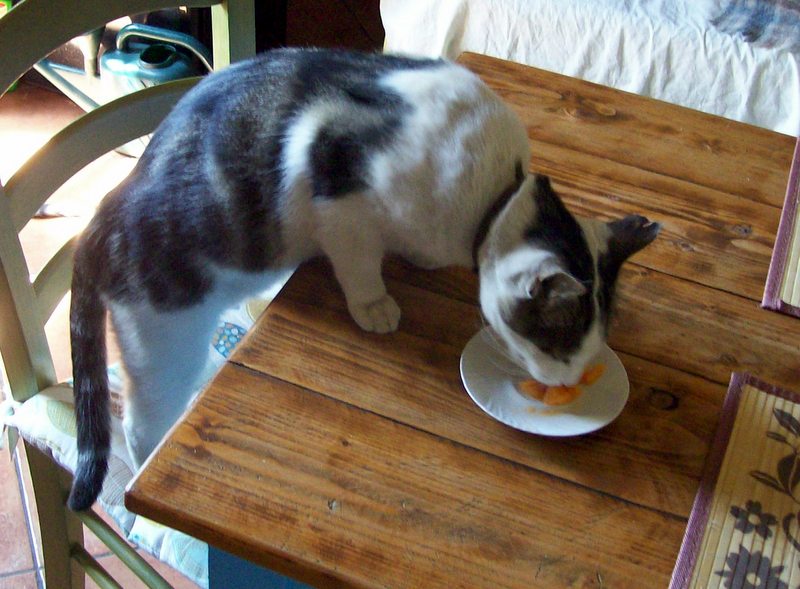Quanta Frutta! Posted by Serena on Aug 25, 2017 in Culture
In our giardino (garden) we have two small apple trees which despite their humble proportions have provided us with a bumper crop this year.
Apples, apples every day …
… apples for breakfast with our muesli, apples after lunch, apples for our afternoon merenda (snack), apples in our salad, and who knows, maybe a nice torta di mele (apple cake) for dessert in the evening.
But that still leaves us with a large quantity of bruised, ant and wasp nibbled windfall apples! So, it’s time to roll up my sleeves and make kilos of marmellata di mele (apple jam), apple chutney, and so on.
Naturally, we like to have a change every now and then, and for that I go to il fruttivendolo (the greengrocers) where c’è solo l’imbarazzo della scelta (I’m spoilt for choice): meloni (melons), angurie (watermelons), albicocche (apricots), pesche (peaches), noci pesche (nectarines), susine (plums), pere (pears), fichi (figs)!
A few of my favourite fruits:
At the top of the list there’s le pere coscia, a wonderful summer variety of pear which is small and compact with a tender skin. I like them both when they‘re still green and crispy, and when they’re yellow with a pretty pink shade on one side, at which stage they’re ripe and wonderfully juicy.
In Italy, pears are traditionally accompanied by cheese (we can’t let those innocent little pears go out alone!), and my favourite combination is pere coscia and stracchino (a mild creamy cheese).
Then there are le pesche (peaches, not to be confused with pesce, which is fish!). Their powerful scent beats all the other fruit in the fruttivendolo and I find it hard to resist them. There are pesche bianche (white fleshed peaches) and pesche gialle (yellow fleshed peaches), but my favourite are le pesche di Massarosa (small peaches cultivated in Massarosa, near Lucca): they look quite plain but their delicious flavour really explodes in your mouth.
Now onto melons! Their hard raggedy ‘shell’ hides a beautiful golden orange flesh and a flavour to rival the nectar of the Greek gods. Il melone is Smokie the cat‘s favourite fruit. Smokie loves the juicy central part of the melon where the seeds live (I remove them before he tucks in). As soon as we start cutting the melon at the end of pranzo, he strolls into the kitchen, jumps onto ‘his’ chair and patiently waits for his share.
Finally, there’s l’anguria, a.k.a. il cocomero (water melon), with its bright red crunchy flesh that both quenches your thirst and feeds you at the same time. Anguria is the ubiquitous king of summer fruits when it comes to family get-together or picnics. In fact a large anguria can weight up to 11 kg and will easily feed a whole family (including the animals!).
It’s important to eat it chilled, so if there’s no space in the fridge, we normally leave it outside in fresh running water, such as a nearby mountain stream. In the summer, it’s not uncommon to find a massive anguria immersed in la fontana del paese (the village fountain).
When we were children we loved anguria time. Our parents would send us out in the garden with a large slice each and as we bit into its juicy flesh we literally ‘washed’ our faces. Then, sitting on a wall side by side, we would compete to see who could spit their big black anguria seeds the furthest. For some reason, the boys always won!
P.S. don’t forget: una mela al giorno leva il medico di torno!

Build vocabulary, practice pronunciation, and more with Transparent Language Online. Available anytime, anywhere, on any device.





Leave a comment: